- DroidAfrica
- Gadgets
- Vivo
- Vivo Y1s
Vivo Y1s

Vivo Y1s Highlights and Overview
The Vivo Y1s is an entry-level smartphone for folks on budget. The device is base on Helio P35 and cost just $115 at launch in Vietnam. The Y1s comes in a 6.22-inch IPS HD+ display with 720 x 1520 pixels resolution. It utilizes a 19:9 aspect ratio and has a dewdrop notch overhead housing the selfie sensor.
Under the hood, you are getting an Octa-core MediaTek MT6765 Helio P35 CPU, clocked at 2.3GHz, along with PowerVR GE8320 GPU, 2GB RAM and 32GB of internal storage.
As for the camera department, the Vivo Y1s a single rear and front camera. At the back, there is a 13-megapixel snapper with a single LED flash, while a 5-megapixel selfie lens is kept in the notch upfront.
No fingerprint scanner is seen on the device, but you get FaceID support, and yes, the phone has dual SIMS with 4G LTE network on both cards. Fueling the Y1s is a 4030mAh battery with 5V/2A charger, while Google Androi 10 with Funtouch v10 runs out of the box. Other key specifications of the Vivo Y1s are detailed in the table below.
Vivo Y1s Full Specifications and Features
NETWORK
| Technology | GSM / HSPA / LTE |
| 2G Network Bands | GSM 850 / 900 / 1800 / 1900 - SIM 1 & SIM 2 |
| 3G Network Bands | HSDPA 850 / 900 / 1800 / 1900 / 2100 |
| 4G Network Bands | LTE band 1(2100), 3(1800), 5(850), 7(2600), 8(900), 20(800), 28(700), 38(2600), 40(2300), 41(2500) |
| Speed | HSPA 42.2/5.76 Mbps, LTE-A (2CA) Cat6 300/50 Mbps |
LAUNCH
| Also Known As |
- - |
BODY
| Dimensions | 155.11 × 75.09 × 8.28 mm |
| Weight | 161 grams |
| Build | Glass front/plastic body |
| SIM Type | Dual SIM (Nano-SIM, dual stand-by) |
DISPLAY
| Display Type | IPS LCD capacitive touchscreen, 16M colors |
| Size | 6.22 inches, 99.6 cm2 (~81.4% screen-to-body ratio) |
| Resolution | 720 x 1600 pixels (~276 ppi density) |
PLATFORM
| Operating System | Android 10; Funtouch OS v10 |
| Chipset | Mediatek MT6765 Helio P35 (12nm) |
| CPU | Octa-core (4x2.3 GHz Cortex-A53 & 4x1.8 GHz Cortex-A53) |
| GPU | PowerVR GE8320 |
MEMORY
| RAM + ROM | 2 GB |
| Card Slot | Yes, up to 256 GB via microSD card (uses dedicated slot) |
MAIN CAMERA
| Camera Type | Single Lens |
| Camera Sensor(s) | 13 MP Main camera |
| Camera Features |
Autofocus Continuous shooting Digital zoom Geotagging Panorama HDR Touch focus Face detection White balance settings ISO settings Exposure compensation Self-timer Scene mode 5-element lens |
| Video Resolution | 1080@30fps, 720p@30fps, |
SELFIE CAMERA
| Camera Type | Single Lens |
| Camera Sensor(s) | 5-megapixel, f/2.2 aperture |
| Camera Features |
FaceID, HDR, 6-level AI face Beauty |
| Video Resolution | 720p@30fps |
SOUND
| Loudspeaker | Yes |
| Speaker Location | Chin, below display |
| Audio Jack Type | Yes, 3.5mm audio jack |
CONNECTIVITY
| Bluetooth | Bluetooth 5.0, A2DP, LE |
| NFC | |
| GPS | Yes, with A-GPS, GLONASS, GALILEO, BDS |
| FM Radio | Yes, FM Radio |
BATTERY
| Battery Capacity | Non-removable Li-Po 4030 mAh battery |
| Wireless Charging | No |
| Talk Time Talk Time is the longest time that a single battery charge will last when you are constantly talking on the phone under perfect conditions, Ambient temperature and highly dependent on the cellular network environment such as the distance to the closest cell network tower. | Up to 28 hours |
| Stand-by | Up to 480 hours |
OTHER FEATURES
| Sensors | Fingerprint (side-mounted), accelerometer, proximity, compass |
| Box Contents | Charging Brick / USB cable |
Vivo Y1s User Reviews and Opinions
LEAVE A REPLY
Disclaimer Note
We CANNOT guarantee 100% accuracy for the specification table above.

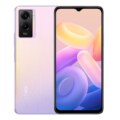
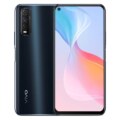
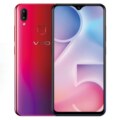
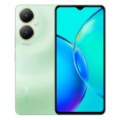
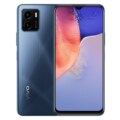
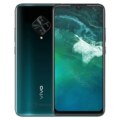






Vivo Y1s is a great phone. The camera is nice.
It is great for selfies. You don’t need.to told the shutter to snap just say cheese when you activate 5he function and it’s done.
It is fast charging. You can take pictures of a video while it’s playing.
It has motorbike feature. When you are bike and someone calls you., It will send a message to the person to call back that you are on the bike.
It has smart motion, air operation.
This is great.
I
It’ s a good phone. It is fast, it’s camera is clear and sharp. I love the eye protection present in the phone.
The phone is generally good.